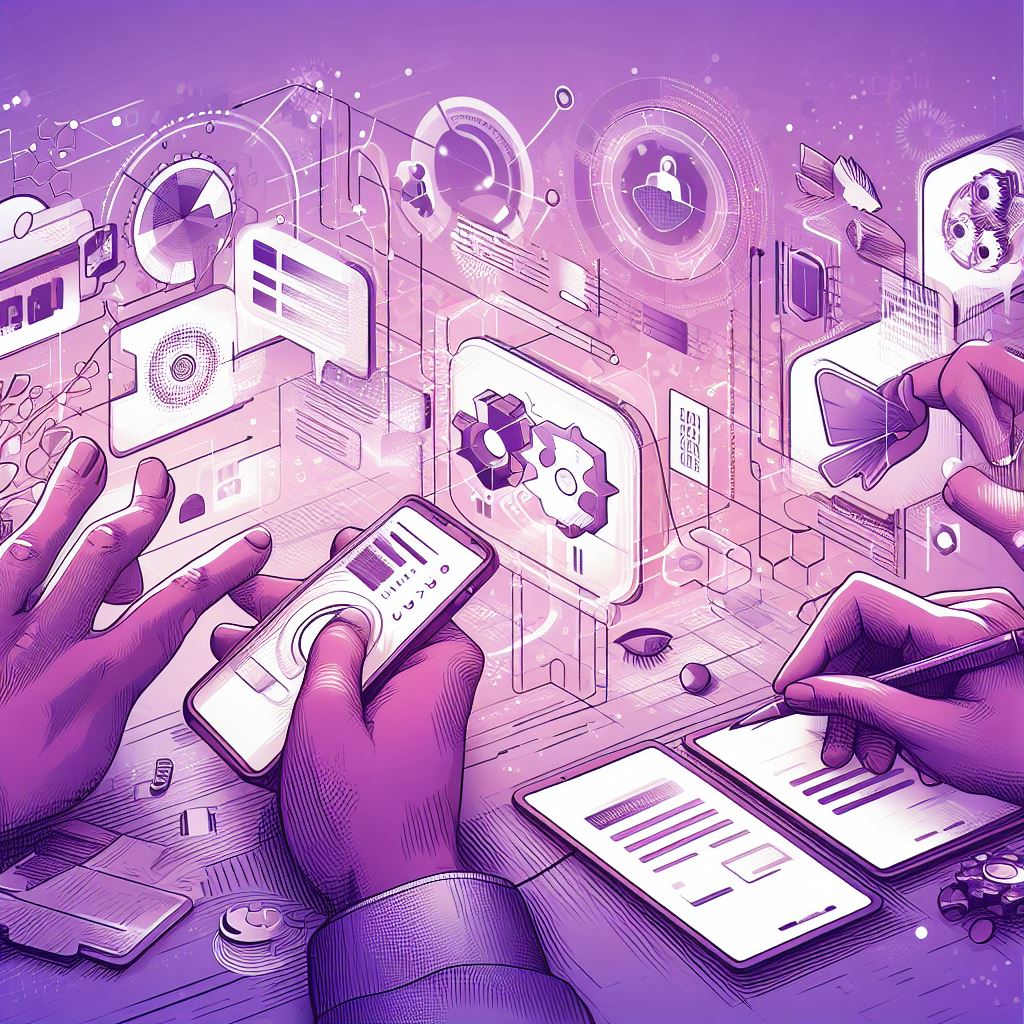Boosting Engagement through Learning and Personal Growth
Boosting Engagement through Learning and Personal Growth
- How can learning increase engagement?
1.1 The case for learning
1.2 The link between engagement and learning
1.3 Measuring engagement at work
1.4 Personal growth and its relationship with learning
1.5 Shaping personal growth - A Different Approach to Learning
2.1 Types of learners
2.2 Challenges to learning in the workplace
2.3 Tips for an efficient learning and growth process
2.4 Avoiding information overload - Practical ideas on how to create a learning culture
3.1. Initiatives on the organization level
3.2. Initiatives on the individual level
4.3. Good to know before you start - Tools worth trying to improve employee engagement through learning
Final thoughts
This article explains why employee engagement will be difficult or almost impossible to achieve without transforming the company’s culture into a culture of continuous learning. If you want to know how your employees or your own engagement is related to aspects such as education, micro-activities, personal growth, and innovation, read on!
1. How can learning increase engagement?
1.1 The case for learning
A good teacher could tell you about the close relationship between engagement, learning, and personal growth. Learning plays a key role in fostering personal growth, and personal growth stimulates workplace engagement. This means when an employee
· understands their role better,
· finds best practices to complete tasks,
· and deepens their knowledge about work,
engagement at work can reach its highest potentials (TalentLMS, 2021). Learning also boosts productivity, supports teamwork and collaboration, and enhances all aspects of an operation. As an employer, the case for encouraging learning spans beyond engagement:
· Job Satisfaction
· Commitment and loyalty
· Retention
· Efficient and high impact performance
Learning supports almost every achievable metric that enhances and enables more effective workplaces (Bakker & Demerouti, 2007). Read more: Why and How to Create a Learning Culture in the Company.
1.2 The link between engagement and learning
Humans naturally desire to explore, discover, develop, and learn about the world around them (Brown & Dryden, 2004). The human brain craves new knowledge and training regularly, and engaging growth materials promote motivation to learn (DeCarvalho, 1991) (Rogers & Freidberg, 1994). However, the reverse is also true. When we become complacent, the brain grows bored and tired.
This is a common problem. The bad news: Research has found that nearly 85% of employees are not engaged at work (Gallup, 2021) and that 74% of employees do not believe they achieve their full potential at work due to a lack of development opportunities (Everett, 2012). While low engagement reasons may vary, research consistently finds that learning and development enhance engagement levels.
The good news: together, leaders and teams can transform existing practices and ignite passion in their employees. Changes don’t need to be drastic; 10 minutes a day to learn and develop skills can make each day spent at work more valuable.
1.3 Measuring engagement at work
A ruler can’t measure engagement. A few key signs can indicate engagement levels among employees and raise awareness of issues that can tamper with the workplace’s engagement.
Surveying employees about how they feel at work and if they suggest others to work with them, both offer valuable insights.
- Identifying specific problems in teamwork and growth through annual surveys enable leaders to learn more about employees.
Silence says as much as answers. Those who do not respond to annual surveys are almost three times more likely to leave their workplace in the next six months than those who answer (Judd et al., 2018).
1.4 Personal growth and its relationship with learning
Learning rescues engagement and fuels personal growth; it helps employees gain new perspectives, create new ideas, expand critical thinking skills, and prepare for new challenges.
94% of employees state they would stay longer with their workplace if training opportunities were available (Lefkowitz & Pate, 2019). Also, career growth opportunities act as the most common reason people change jobs (Gallup, 2021). Career development offers one of the best ways to increase employee engagement. Employers can empower and enable their current workforce with learning and advancement, but instead, many employers seek people with previous experience in the field rather than develop their own (Wellmark, 2021).
1.5 Shaping personal growth
A flower needs more than just water to grow and blossom, and people need more than just learning to achieve personal growth. There are other ways to improve personal growth and measure progress. We recommend making a personal growth plan consist of 4 components:
- Target/Goal;
- Actions to achieve;
- Evidence of completion (KPI’s);
- Target date.
Both small and big goals promote growth, but bigger goals may make more significant progress. Sometimes, making small goals creates momentum for change and development (Fogg, 2019). It doesn’t matter if the plan consists of smaller or bigger goals.
In personal growth, soft skills often go overlooked. These skills help us to better interact with other people. Three particular “soft-skills” experts recommend for the biggest impact on personal growth are:
problem-solving
- control of emotions
- purpose.
Mastering these will benefit the person, the rest of the team, and the employer (Bruce, 2017).
2. A Different Approach to Learning
With constant changes to how we communicate, work, travel, and interact, it makes sense that the way we learn also becomes modernized. Among the most efficient ways to succeed in learning today is through Mircolearning, or using ~15 minutes a day to learn (Gutierrez, 2018). Microlearning delivers and reinforces larger, more tedious trainings in bite-sized pieces—and the repetition over a long period ensures comprehension and retention (Dunlosky et al., 2013). Even more exciting, research also finds that microlearning proves more effective and efficient than classroom learning and training. Read more: How to Motivate Employees to Participate in Training.
One of the perks for employers: 15 minutes a day does not disrupt workflow—and the benefits of the learning, if done regularly, enhance positive change, productivity, job satisfaction, and engagement. In addition, employers can use a diverse range of learning topics to promote positive change, including:
• communication
• professionalism
• health and well-being
• team-building game
Even more important: microlearning increases engagement by 50% (Gutierrez, 2018). Microlearning methods ensure that users stay engaged with short lessons, and even if it does not work, the topics can change to suit the user. eLearning platforms make this possible. More info: Why is Microlearning an Effective Tool for Employee Development?
eLearning has been on the field for a while now. Whether in a live session with a teacher or a pre-recorded video or podcast, eLearning and virtual training take 40-60% less time to complete than classroom training with equal or greater results (Arad, 2016).
2.1 Types of learners
Go back to that teacher in 1.1 and ask them if all their students learn with the same methods. They’ll tell you that they have to shape curriculum and material around four types of learning.
• Visual – thrives on viewing diagrams, pictures, and spatial material.
• Auditory – rely on live lectures, videos, audio recordings, or from talking about the subject.
• Kinesthetic –apply, and experience the knowledge gained first hand.
• Reading – study written documents, notes, articles, and books.
The same rings true for employees and leaders who tap into these learning types can make the learning process faster and more effective. To determine your learning type, experiment, and be mindful of what works the best. You can also try out this test that might help you to discover it, by asking the right questions!
2.2 Challenges to learning in the workplace
The biggest obstacle that limits us from learning is our mindset. As a result, growth is also stopped and therefore is not possible. There are four main reasons why people don’t learn and let the growth process stop. As said before, everything starts with an individual’s mind. First of all, an individual may think that there is nothing new to learn for him and that is the worst reason behind it, because a person who believes that he knows everything is extremely hard to change. Secondly, an individual doesn’t want to learn, which is as bad as the first reason. Thirdly, an individual might not be aware of the fact that he lacks knowledge and doesn’t even know that he could be working more effectively with the right set of skills. And last, but not least, the lack of motivation is a massive obstacle in the learning process.
However, we have heard a lot that learning something new becomes much more difficult as we get older. Is it true?
Children literally absorb new information. And this is because their minds have not yet become as complex systems as in adulthood. Not disturbed by contexts, information filtering, significant prior experience, etc. As adults learn, new information needs to be processed more carefully, compared with existing knowledge, and thus the process becomes longer due to analysis.
What can help us?
- Exciting learning process – for children, every new discovery is like a miracle and they learn with enthusiasm, which makes the process much easier. It is also important for adults to enjoy learning and to find an approach that works.
- Learning slowly but regularly – children, as you know, do not have many responsibilities, but we have our own lives with countless daily worries that do not allow us to fully “connect” to learning, so it is important not to overwhelm ourselves with information and tasks, but to start gradually. Read more: How to Create a Microlearning Program?
- Emphasize key information that definitely must be remembered – this will make it easier for the brain to take the first step, which is to filter information and select key findings.
2.3 Tips for an efficient learning and growth process
We have eight useful tips to improve the learning process.
1. Eating healthy benefits learning. Foods like fish, nuts, blueberries, broccoli, spinach, and avocados provide nutrients that help the brain process the new information.
2. Drinking water supports brain functions and learning and helps the brain and body properly work.
3. Proper sleep ensures healthy memory functions, allowing for the retention of information gathered during the day.
4. Reducing stress can eliminate distractions and boost memory retention for learners.
5. Listening to music helps certain parts of the brain open up and gather information.
6. Learning with others provides opportunities for discussion, sharing opinions, and understand the subject better.
7. Avoid multitasking when learning to ensure that the brain concentrates on studying the subject at hand.
8. Identifying the type of learning best suited to the learner gives them the best chance to retain and comprehend new information.
2.4 Avoiding information overload
Ever since the internet hit the mainstream, everyone has been susceptible to information overload. One-fifth of adults in the US report feeling overloaded with information (Horrigan, 2016). Having a plethora of information should make us more intelligent, but the truth is that it harms us more than it does good. Information overload puts the brain in inaction, and if new information isn’t used soon, the brain loses about 75% of all our memory data (citation needed). The biggest risks of information overload are:
- brain fog, or cognitive overload for our brain
- loss of willpower or motivation
The non-stop flow of information won’t slow down any time soon. Distance serves as the most efficient way for employees and leaders to fight information overload. Keeping useless information sources away and clearing the mind allows learning new things. More info in the article: How Too Much Information Can Overwhelm You.
3. Practical ideas on how to create a learning culture
3.1. Initiatives on the organization level
There are a variety of initiatives to develop learning in the workplace and thus improve engagement. The best advice would be to start with the simplest activities and experiment with what appeals to employees the most. Culture change requires time and resolve, but the results are worth it!
Some examples of how to enhance the daily life of employees with learning:
- Send employees an interesting fact about the company’s industry or an inspiring quote every morning
This is a good way to start on the path to continuous learning in the organization’s culture. This will not only educate and inspire employees, but will also reveal that management cares about employee satisfaction and growth, as well as help maintain enthusiasm and energy within the company.
- Create a book club
Offer employees the opportunity to share impressions about books of different genres, where employees can recommend valuable reading materials to each other and exchange books. At the book club, a group of employees can voluntarily read the same book, which can then be discussed together. It is also a good and relaxed way for employees to socialize with each other on a regular basis, strengthen connection, and talk about non-work matters. This may be the way to “force” someone who is not a book fan but wants to get involved to read and learn.
- Create a common challenge with an aim to learn something new in practice
Develop or choose a ready-made solution to a common challenge with a specific goal. For example, to improve employees’ health and well-being in 30 days, strengthen team spirit and get to know colleagues better, or put company values into practice so that employees can name them even in the middle of the night. At the end of the challenge, it is worth celebrating the achievements together and repeating such programs from time to time!
- Offer business training in microlearning format
Find a mentor or coach who is willing to divide the program into small snippets where employees can learn one new thing each day. Business training must be universal enough to benefit all employees, such as improving communication skills, creative problem solving, critical thinking, boosting productivity, work-life balance, etc. The goal is to learn slowly but regularly.
- Try a team-building game where employees have to teach each other something useful
As with a book club, employees can learn and grow together. There may be a lot of hidden talent inside the company itself, and coaches might not be needed for the start. Rules of the game – to teach a colleague something new. It can be a new skill or even trying a new hobby, for example, to help learn some digital tool, teach snowboarding, crochet, fishing, etc.
- Offer career counseling opportunities to employees
Both the involvement of professionals and the managers themselves can help here. It is worth discussing with each employee what their personal goals are, how they can be achieved in the particular company, and how management can help in this way. It is also worth discussing with the employee how to expand his abilities or responsibilities, which would help to grow both the company and the employee professionally. In order for an employee to be engaged and ready to work in one place for a long time, it is important for him to be clearly aware of his growth opportunities and the direction in which to work accordingly. Did you know? Development opportunities for employees have become the second most important factor of happiness in the workplace.
- Create work shadowing days where employees have to shadow each other
Work shadowing, which is used in universities for students, is a kind of job training that is also worth trying within the company. In such a way, employees will get to know other departments’ daily lives and get a better idea of each individual’s role in a large organization. Shadowing colleagues will allow them to empathize more with the work done by others, as well as gain experience that says “We all work for the same goal!”. In addition, one of the best ways to learn something is to watch others get involved in the process, thanks to the mirror neurons in the brain. This explains why people are increasingly turning to instructional videos.
3.2. Initiatives on the individual level
When learning on your own initiative, you need to consider two key factors: it is important that you are genuinely interested in the topic, and it is crucial to use reliable sources (which can sometimes be difficult to select on your own).
Here are some ideas for learning you can encourage your employees to do individually:
- Listen to podcasts, webinars, free short lectures (like the inspiring and useful “Tedx Talks”)
- Read educational books on a topic of interest to you
- Join a social networking group where others share experiences and advice on a topic that interests you
- Do your own research on the topic using reliable sources
- Perceive everyday mistakes as information
- Try to network with people working in the field
- Apply for courses or master classes (also try free options)
- Try to put the new knowledge into practice as often as possible
3.3. Good to know before you start
Here are some other important things to keep in mind before making a change in your company. It can help encourage employees to learn which will improve team engagement and efficiency.
Tip 1! Rewards and recognition will help to successfully develop the learning culture in the company. Every time an employee learns something important (for example, completes a training course), it is great if the employer notices this achievement and celebrates every small victory together. The prize can be as small as a cup with a company logo, a box of candy, or an intangible reward such as a coffee break with a manager or a virtual diploma. Did you know? 69% of employees would work harder if they thought their efforts would be better appreciated.
Tip 2! Employees often do not want to take part in training because they consider it a waste of time and more unfinished work. However, in order to motivate employees to participate in training activities, it is important to emphasize the practical benefits that the employee will gain, such as being able to do the same tasks faster, expand their skills list, get certified, or just have a good time learning together with their colleagues. Business leaders must also emphasize that their desire is to achieve continuous learning and growth throughout the organization that will prevent stagnation, and this change begins with each employee individually (where senior management is the major example for others).
Tip 3! In order not to have the opposite effect of reducing the engagement and fatigue of employees, the participation in training programs and similar engagement activities should be voluntary. This should definitely not be imposed, as research shows that this actually reduces employee productivity. Instead, motivate them to participate by highlighting the great benefits underpinning this initiative, which employees will not want to miss, and don’t forget to mention the rewards (tips 1 and 2).
Tip 4! Many forward-thinking companies have introduced a gamification method into their business that also works well in learning. Gameplay helps to exercise and motivate our mental muscles, therefore playing games is good for our brain. Gamification makes the process more fun, achievement-oriented and uses people’s natural enjoyment of games, where every small achievement motivates us to reach an ever-higher “level”. How does gamification manifest itself in learning? For each task, you can award points, create employee leaderboards, collect badges, form employee teams, award prizes to the winners, etc. More info: Why Have Gamification in Training Programs
Tip 5! Any new initiatives within the company should be introduced gradually, testing what works in the company and what does not. It is best to start with easier-to-implement activities and gradually complement them until the desired result is achieved and the company’s culture has become focused on learning and growth in every part of it.
4. Tools worth trying to improve employee engagement through learning
Many difficulties accompany the path to learning. We must continue to adapt, grow wiser, and stay open to face the challenges at hand. Only continuous development will improve our personal and professional performance and maintain our engagement in what we do. The shared goal of people and organizations is for employees to grow into their best versions. Any organization that wants to remain competitive and sustainable must find solutions to foster a learning culture.
Whether just starting on the learning path or looking to prop current learning efforts, we have compiled a small list of digital tools created to improve learning and engagement.
- Socrative
Socrative is a system that allows you to create educational games (such as a company trivia) that employees can solve using mobile devices. Such a quiz game can be useful to check in which organizational matters employees are less educated or evaluate the outcome after the learning program/activity.
- Participate
Participate allows you to collect and store resources, share references, and educational materials. The Participate platform allows you to gather information from the Internet and then share it with your group members. That offers the opportunity to manage online academic content and improve research methods more effectively.
- Efectio
Efectio is an employee engagement platform based on microlearning and gamification. On the platform, employees can participate in challenges created by professional mentors on a variety of topics and collect points for completed tasks that can later be exchanged for prizes as rewards. Efectio also acts as an employee intranet where participants can share impressions and virtually support each other.
- LinkedIn Learning
LinkedIn Learning is a popular online learning platform that helps anyone learn business, digital, and creative skills created by experts. They are mostly focused on the most in-demand business topics, and their content is delivered in video format.
- Google Arts & Culture
Google Arts & Culture was created in 2020 and it’s an online platform on which anyone can view videos of artworks and cultural artifacts from cultural organizations around the world. They offer interactive experiences from 2000 leading museums and archives.
Final thoughts
Although it becomes more difficult for us to learn as we grow older, we must continue to grow throughout our lives so that we become wiser and more open to the new with each year we live. Only continuous development will improve our personal and professional performance and maintain our engagement in what we do. Being the best version of oneself is the goal of many people’s lives, therefore every new employee will look for professional opportunities in the organization that will allow and help to achieve what a person aspires to. That is why, any company that wants to be competitive and sustainable must find and implement solutions to a culture of continuous learning.
Sources:
- https://news.gallup.com/poll/241649/employee-engagement-rise.aspx
- https://www.themuse.com/advice/10-shocking-stats-about-employee-engagement
- https://onlinelibrary.wiley.com/doi/abs/10.1002/9781118785317.weom110009
- https://scholar.google.com/scholar?hl=lv&as_sdt=0%2C5&q=reasearches+about+engagement&btnG=
- https://www.talentlms.com/ebook/learner-engagement/definition
- https://trainingindustry.com/blog/performance-management/how-learning-development-impacts-employee-engagement/
- https://www.kincentric.com/-/media/kincentric/pdfs/kincentric_2019_trends_global_employee_engagement.pdf
- https://www.inc.com/magazine/201412/paul-keegan/the-new-rules-of-engagement.html
- https://www.wilmarschaufeli.nl/publications/Schaufeli/491.pdf
- https://blog.smarp.com/employee-engagement-8-statistics-you-need-to-know
- https://www.forbes.com/sites/janbruce/2017/03/10/why-soft-skills-matter-and-the-top-3-you-need/#39e33f2276f3
- https://hbr.org/2018/03/employee-surveys-are-still-one-of-the-best-ways-to-measure-engagement
- https://www.lifehack.org/851926/efficient-learning
- https://www.docebo.com/resource/elearning-market-trends-and-forecast-2017-2021/
- https://www.wellmark.com/blue-at-work/healthy-employees/personal-growth-and-development
- https://ec.europa.eu/eurostat/documents/3217494/7596823/KS-01-16-691-EN-N.pdf/page 255
- https://www.grin.com/document/421550#:~:text=Around%2070%25%20of%20workers%20believe,building%20their%20career%2Dplanning%20skills









